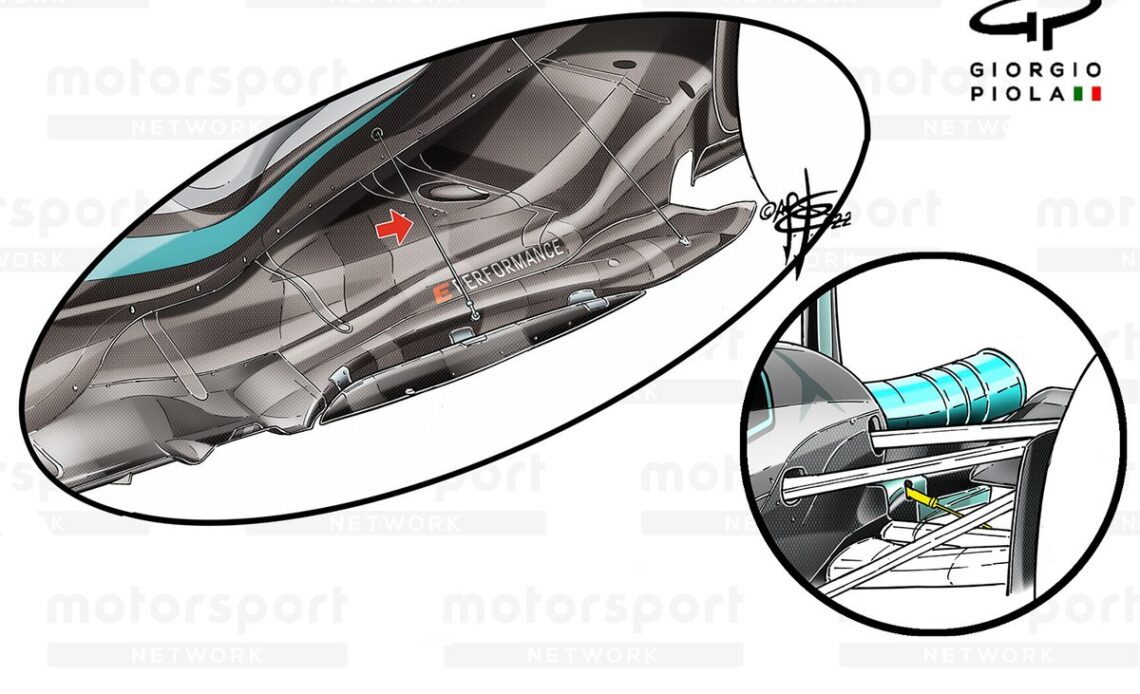After the violent bouncing that trademarks the 2022 generation of cars was exacerbated in Baku, F1 drivers across several teams urged the FIA to take action amid health concerns.
The FIA responded ahead of the Canadian Grand Prix by issuing a technical directive to help combat the effects. It informed the teams it planned to formulate a metric to measure the vertical acceleration loads of the cars and force teams who are affected the most to dial out the bouncing.
But crucially the FIA’s head of single-seaters, Nikolas Tombazis, also offered teams the option to add a second stay to strengthen the floor, a solution which was found on the Mercedes cars during Friday practice in Montreal.
Mercedes removed the second stay on Saturday after rival teams suggested there were grounds to file a protest, as Tombazis’ technical directive was only advisory in nature and its car could therefore still be declared illegal by the FIA’s scrutineers. F1’s current technical regulations formally only allow a single floor stay to stiffen up the floor.
Mercedes W13 extra floor stay – Canada
Photo by: Giorgio Piola
Ahead of further meetings this week to find a compromise on 2022’s hot topic, Ferrari chief Binotto said that by issuing the technical directive the FIA did not follow the correct procedures, as it was not a change to the regulations.
“For us it’s that technical directives are not applicable,” Binotto said on Sunday night. “It’s something we mentioned to the FIA, the reasons they are not applicable is that a TD is there to clarify regulations or to somehow to address policing, but a TD is not there to change the regulations.
“You cannot change the regulation through a TD. And that’s governance.”
The FIA could push through a regulation change without the teams’ approval on safety grounds, but it would still have to be ratified by its World Motor Sport Council. The council’s next gathering takes at the end of the month ahead of the British Grand Prix, so in theory a rules tweak could be in place before the next race.
Binotto added: “Even on safety grounds, what can the FIA do? It’s to first have a consultation with the TAC [technical advisory committee], change the regulations and go straight to the world council for a formal approval of the change of the regulations without having the approval of the teams on safety grounds.
“But you do not change the regulations with a TD. So that’s why we sent that to FIA, for us these TDs were not applicable.
…
Click Here to Read the Full Original Article at Autosport.com – Formula 1 – Stories…

